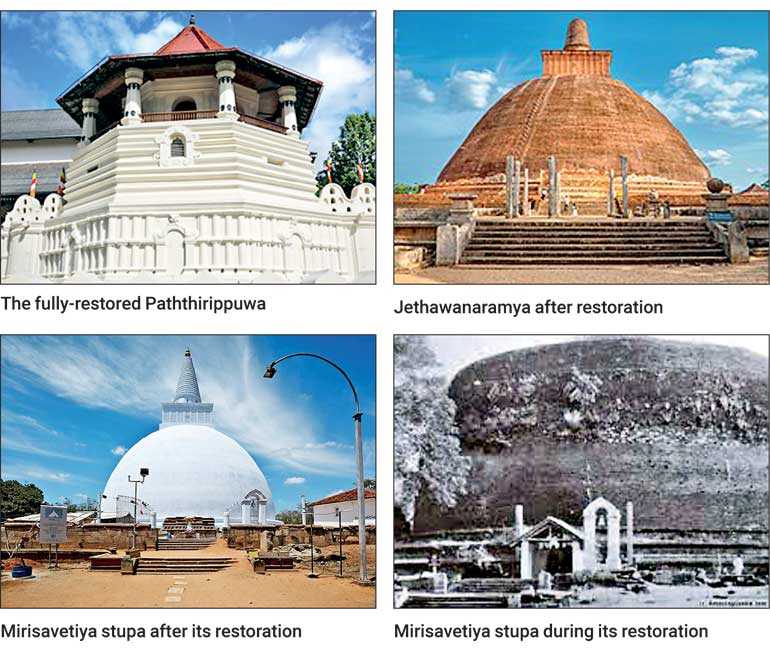 |
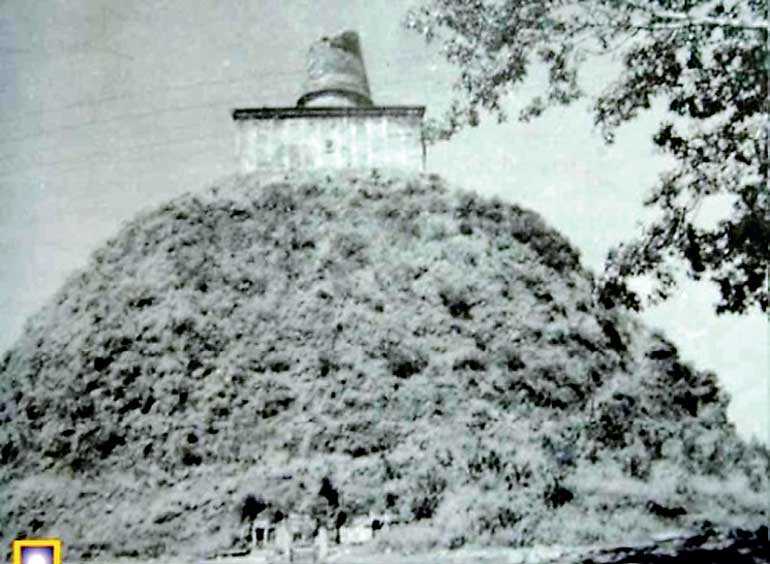 |
| Jethawanaramya before restoration |
 |
| Project Steering Committee from left: W.A. Cyril, Gerry Suraweera, Chairman Hemantha Wattegedara, Dr. Aravinda Abeygunawardene, Dr. Sisira Ranatunga, Dr. Susantha Siriwardena and Vudya Sellahewa. Members who are absent are Dr. Dilhara Edirisinghe, Priyantha Siriwardene, Sujith Hewage and Damith Madusanka |
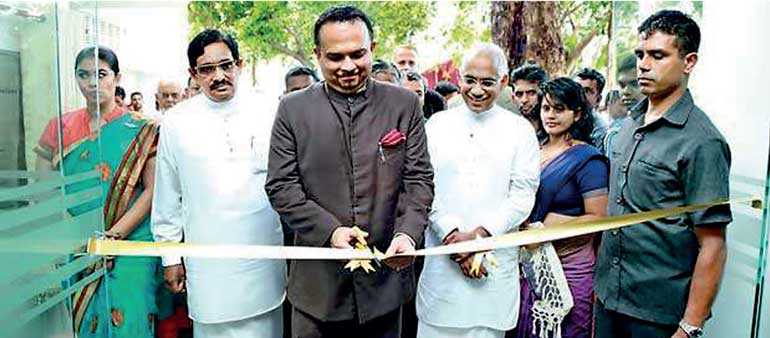 |
| Opening of the FEAS Centre |
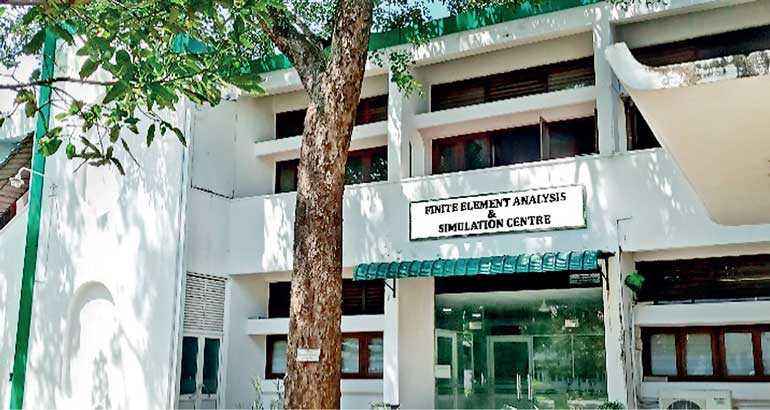 |
| View of the Centre |
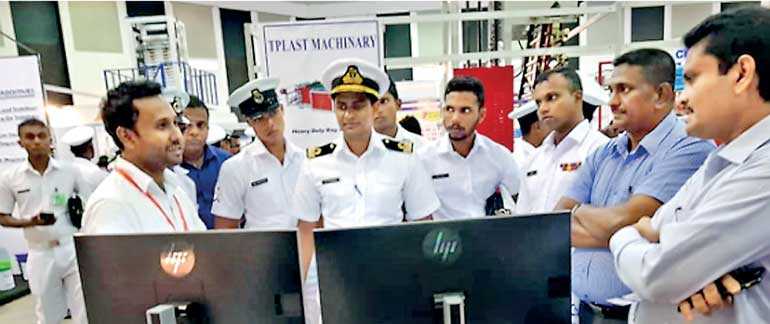 |
By Gerry Suraweera
The process of Finite Element Analysis and Simulation (FEAS) is still considered somewhat of a mystery to industrialists, academics, researchers and the public, although the National Finite Element Analysis and Simulation Centre (FEAS Centre) was opened through a public-private partnership by former Plantation Industries Minister Naveen Dissanayake more than a year ago.
This centre was established in the premises of the Rubber Research Institute, which is the world’s first R&D centre for the rubber industry, located in Ratmalana. The funding for the high-tech computers and software packages was provided through the Ministry of Plantation Industries and the cost of the management and operations of the centre is being funded by members of the Plastics and Rubber Institute (PRISL) and Sri Lanka Association of Manufacturers and Exporters of Rubber Products (SLAMERP).
Story of FEAS Centre
The Sri Lanka Rubber Industry Master Plan 2017-2026, which is the national agenda for the development of the rubber industry, was released by the Sri Lanka Rubber Secretariat of the Ministry of Plantation Industries in 2017. Targeted growth of 200% in export earnings is expected from the rubber industry by 2025, moving the industry towards becoming a 15% contributor to national export earnings. While Sri Lanka’s current market share of the global rubber product market is 0.27%, the target is to increase this to 0.55% by 2025.
This ambitious plan can only be achieved by earning a higher value addition per unit/kilogram of rubber processed. One key strategy for the industry to achieve this goal is to enhance the industry’s technical capabilities to produce high-value-added products.
The global industrial rubber products market is expected to reach a massive $ 155.5 billion in 2022, driven by the recovering demand conditions of major end user markets. A wide range of rubber products made of synthetic, natural and reclaimed rubber like hoses, gaskets, conveyor and timing belts, engine mounts and damping pads are in this category. The FEAS Centre will be a key element to support Sri Lankan industrialists to enter these lucrative markets.
It was a unique coincidence that Dr. Sisira Ranatunga (whose doctoral thesis is on the use of FEA in industry) presented a proposal seeking Government funding to set up a FEAS Centre via the PRISL. This proposal came at a crucial moment when the Government was considering upgrading technologies in the industrial sector. It was considered very timely and the Ministry of Plantation Industries extended its fullest cooperation to get this project approved through the Rubber Research Institute, which also offered its unstinted support and cooperation.
The FEAS Centre was established as a collaborative project with the Public Sector RRISL and the PRISL and SLAMERP to manage the initial phase. A grant of Rs. 50 million from the Sri Lankan Government was spent on purchasing the software, six computers and a 3D printer while the centre has facilities to carry out Soidworks, 3D modelling, Solidworks - plastic flow, etc. and other accessories.
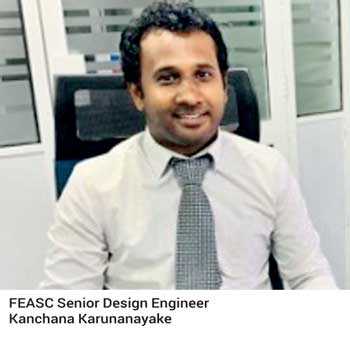 The ownership of the FEAS Centre is with the RRISL, under the Ministry of Plantation Industries (MPI), and the PRISL and SLAMERP are responsible for the management of operations. The operational costs of the centre are being borne by the private sector industry and the wholehearted support and cooperation of all stakeholders, which is a critical factor until the centre becomes self-sufficient in the near future.
The ownership of the FEAS Centre is with the RRISL, under the Ministry of Plantation Industries (MPI), and the PRISL and SLAMERP are responsible for the management of operations. The operational costs of the centre are being borne by the private sector industry and the wholehearted support and cooperation of all stakeholders, which is a critical factor until the centre becomes self-sufficient in the near future.
A proposal to join this project as prestigious ‘Pioneer Partners’ was presented to private sector stakeholders. There are four categories - Platinum, Gold, Silver and Bronze - with the Platinum Pioneer Partner sponsorship fee starting at Rs. 1 million.
PRISL, SLAMERP, Global Rubber Industries and Jafferjee Brothers Exports Ltd. joined as Platinum Pioneer Partners while Camso-Loadstar Ltd, Elastomeric Engineering Company Ltd, Aqua Packaging Ltd. and Laugfs Corporation Rubber Ltd. joined the other categories.
FEA is a powerful, fast, state-of-the-art analytical tool used in modern product design and simulation. This tool numerically analyses and optimises product design rapidly. FEA is capable of analysing and simulating the performance of thousands of design variations for a product to determine the best fit. Responding rapidly changing market needs is achieved by eliminating the need for developing and testing a large number of prototypes.
History and evolution of FEA
I feel it would be most prudent to provide a simple explanation of what FEA technology is before I trace its evolution and history. Finite, which has been derived from the Latin word finitium, means having definite or definable limits or a finite number of possibilities or having a limited nature or existence. Simulation has become a frequently-used word with the advent of computers, to compute the characteristics of a phenomenon, system or process, in order to use that information to solve problems. Just like the complexity of the process, providing a simple explanation itself is a tough task. After going through numerous examples, I found the following explanation to be most suitable.
Let’s say that we want to study how a cube-shaped block of wood would crack up when hit with a hammer. We can simply take a wooden block and hit it to see what would happen. The cube might crack up or even break into pieces depending on how hard we hit it. But we won’t be able to see the miniature crack patterns inside the unbroken pieces of wood.
But if we can build a cube using Lego-shaped miniature pieces of wood and hit it with a hammer, we can then take the pieces apart to see how the cracks propagate inside. This can help us understand the physics behind how each force affects the material and shape, and help us improve the design.
This is how FEA works. We replace the whole geometry of the object with smaller finite elements and we analyse each element after performing tests. The smaller elements need not necessarily be cubes. They can be any shape i.e. triangles depending on the whole geometry. When we solve problems using FEA, the results are approximate and they are often verified by other methods. The accuracy of the answers depends on the size of the finite elements, boundary conditions, assumptions, etc. but they will confirm the performance of the product.
If we consider another example: a wooden beam is fixed at one end and an external load is applied to the other end. The beam is then subjected to finite element analysis to understand how it will react to load or stress. Then different colours denote the varying amounts of stress acting on the beam due to the external load. As is observed, the right end of the bar (coloured pinkish red) bears the maximum amount of stress. This means that this specific area is prone to failure more than the other areas. So we can improve the design by:
- Finding the cause of stress and eliminating or reducing it.
- If it is unavoidable, we can make the particular region thicker to withstand the stress.
- We can also replace the material with another material that has increased strength.
There are many other solutions as well, depending on the purpose and design of the beam.
The other diagram shows how a tyre performs under dynamic loading. The slight flattening under the load is visible and the yellow to red areas indicate the areas of the tyre with the highest contact pressure, where the highest wear and tear will occur.
To provide another simple explanation, the FEA model indicates whether a product will work, where and how it will wear out and whether it is likely to perform to our expectations in real-life conditions.
Simply stated, it is taking a complicated problem and breaking it up into smaller and easier-to-solve shapes like a cube (called elements). This is because there are solution equations for the response of a cube; but we do not have equations for solving the response of something with a complex geometry like a bridge.
So a solution to the problem is obtained from these simple shapes, which are then reincorporated into the full shape of the bridge to analyse the response of that object. This is done using anywhere from thousands to millions of these elements, over a period of simulated time for that event. So simulating the loading of a bridge with millions of elements at each point in time of the event would take a very long time to calculate manually. This is why we use finite element analysis software which can solve these problems quickly.
FEA activities can be divided into two categories according to the velocity or displacement of that particular object.
The ultimate goal of FEA is to eliminate or minimise prototype testing. The industry is now moving towards ‘Virtual Prototyping’. Physical prototyping is time consuming and costly and virtual prototyping facilitates faster response to the customer, making the supplier more competitive in the global market.
FEA is a reliable method of predicting whether a proposed design will be able to meet set design specifications, prior to manufacture. The two main types of methodologies which are applied to identify this are linear and non-linear analysis.
Towards the 1940s, numerical methods had been developed to predict the behaviour of more general structures. Most were frame- and truss-based, and utilised energy methods from Alberto Castigliano and William Rowan Hamilton.
In 1943, Richard Courant proposed breaking a continuous system into triangular segments. FEA was further developed in the 1950s in the aerospace industry by Boeing and Bell Aerospace in the US and Rolls Royce in the UK. One of the first papers to lay out the method was published by M.J. Turner, R.W. Clough, H.C. Martin and L.J. Top in 1956. One of the authors of this first paper was Ray Clough, who was a Professor at the University of California, Berkeley. He was working at Boeing in a summer job and he wrote a second paper that first used the term ‘finite elements’. Berkley quickly became a centre of FEA research and a lot of the early development in FEA took place at Berkeley.
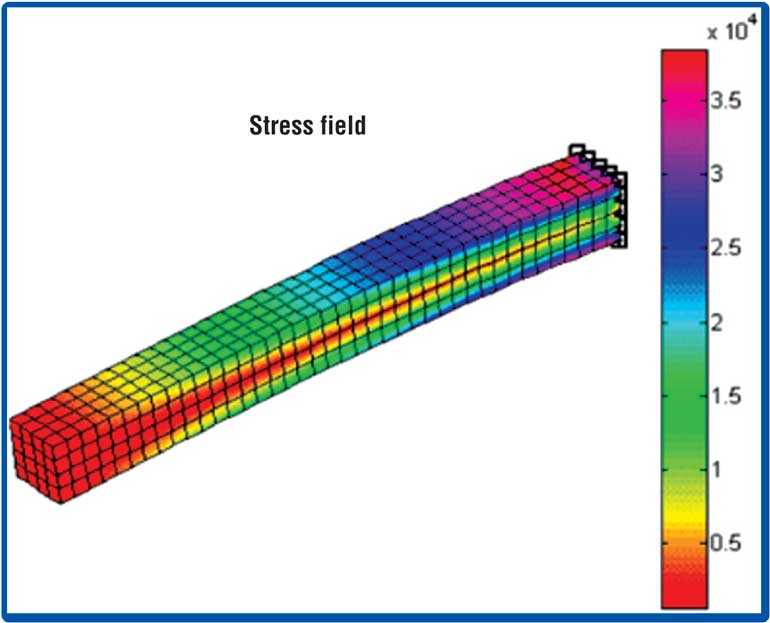
Early Sri Lankan experiences
It is commendable to note that Sri Lankan introduction to this cutting-edge technology had occurred in the late 80s to guide the restoration of ancient stupas.
The ancient stupas of Sri Lanka were solid structures, mostly composed of burnt bricks. Some of them date back to the 3rd Century BC, built to gigantic proportions, making them the largest brick structures in the world. The Jetavana Stupa, built by King Mahasena, is deemed to have reached a height of 122 m, making it the largest brick structure in the world.
Initially, rehabilitation of these stupas was attempted using conventional methods, resulting in the collapse of these stupas. However, Prof. M.P. Ranaweera, recognised as an FEA guru in Sri Lanka, applied the FEA simulation virtual design tool along with the modern principles of archaeological heritage management to carry out the restoration and conservation of these historical structures, as there were no designs nor facts available on how these stupas were built. The Mirisaveti stupa is a good example of a complete restoration. It only had a cracked dome at the beginning of the 20th Century after being repaired by the British, but an ill-planned restoration in 1987 resulted in a collapse of the stupa. After a thorough study using advanced FEA technology, it was restored to its original glory in 1995.
When the Sri Dalada Maligawa was bombed in 1998, the Pattirippuwa was severely damaged and many advocated that this structure be demolished and rebuilt. But it was Prof. Ranaweera who came to the rescue and the Pattiripuwa was repaired by applying the FEA advanced tools and thus the original design was restored to its pristine glory for posterity.
Use of FEA technologies in day-to-day life
If one takes a look around, much of what one sees has, in some small or large way, been simulated on a computer prior to production. Numerical simulation helps build safe bridges, improve gas mileage and guide the manufacture of plastic parts. It ensures that hand tools will not break, that computers will not overheat and that knee joint replacement components will not fail.
As an example, FEA can be used during the design of a bridge by civil engineers who need to know how the bridge will respond when it is filled with cars. For a given set of loading conditions, the analysis would indicate how much the bridge structure would deform and whether or not any of the components would break under the imposed load.
Numerical simulation comes in many forms. It ranges from the analysis of an individual part, such as a bolt, to the simulation of an entire system, such as a chemical processing plant. It can involve structural analysis, electromagnetic analysis, heat transfer or fluid dynamics. Structural analyses, including predictions of mechanical stress, deformation and vibration, make use of FEA. This technique has served as the cornerstone for Computer-Aided Engineering (CAE) for decades.
Unique benefits to the Sri Lankan industryShort-term benefits
Improving their know-how on the use of FEA techniques in product design and application and availability of FEA services which are affordable and accessible to the industry, specifically to the SME sector, will reduce the time taken for product design, prototyping and testing. It also improves the marketability of Sri Lankan rubber products, especially to reach engineering components or high-value markets. The sharing of knowledge and expertise within the industry is expected to result in improved products.
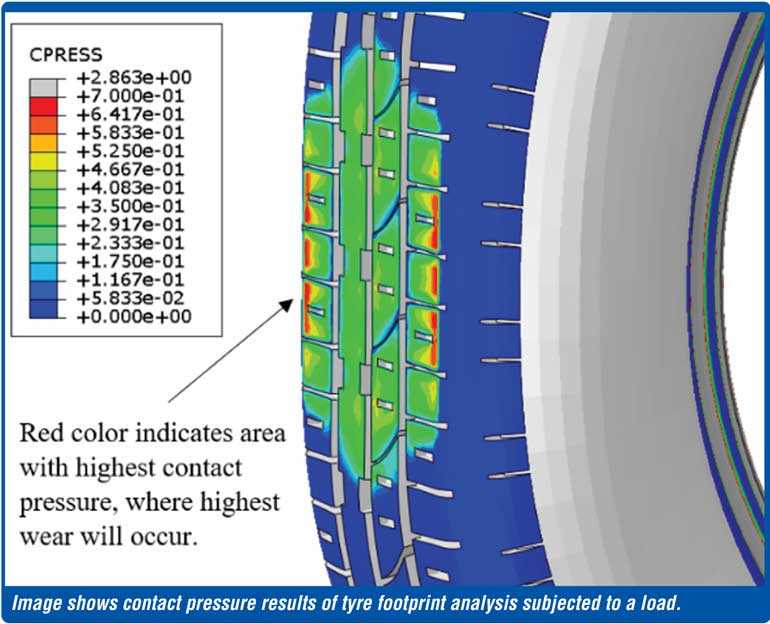
Medium-term benefits
Sri Lanka will develop a cohort of technical experts that have a FEA background and it will bridge engineering knowledge and industry needs (train engineers to solve real-time industry problems). The engineers thinking and design capabilities to improve value addition will increase because of the capabilities of FEA. Overall improvement in technical capabilities for product design and product improvement in the rubber industry will be greatly enhanced.
It will also improve market access due to the recognition of FEA facilities. Weak features in a product and potential points of failure can be identified and corrective measures can be taken to strengthen the product before it enters the market. This will improve confidence in the product and enable entrepreneurs to reach high-value markets. Foreign and local investors may consider the FEAS Centre and the trained design engineers available as a competitive advantage to their sourcing. Many products that are currently exported can benefit from the advanced product design and optimisation, features that can be accrued through FEA technology.
Long-term benefits
The most important factor is that the Sri Lankan rubber industry will keep pace with global competitors and international clients will approach industrialists with confidence. The possibility of developing innovative products for new and existing markets will increase and the FEAS Centre will develop a body of knowledge on different types of materials as well as rubber and plastic compounds. Sri Lanka will be able to offer FEA services to international markets. Rubber and plastic product marketers and distributors across the world will consider Sri Lanka an ideal location for sourcing numerous products as FEA capabilities enhance the rapid response of Sri Lankan firms which is critically important to surviving in international markets. This centre in the future may evolve to cater to other industries which have similar characteristics in terms of product design.
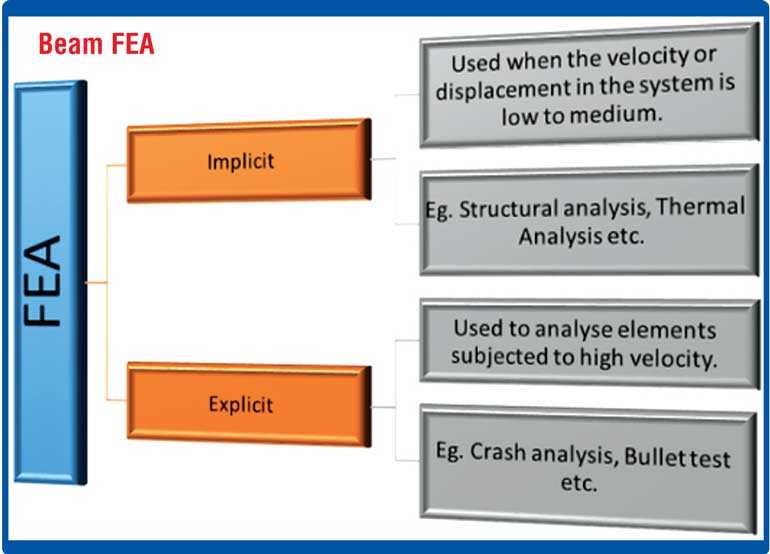
Milestones for the first year
The thrust for the first year was to create awareness within the industry and to facilitate the use of FEA technologies with confidence. Since this is the first and the only FEAS centre in Sri Lanka which is accessible to any industrialist, it is something new and the current degree of awareness and expertise is inadequate. It is also been a learning curve for the centre engineers as well.
In January 2019, the first short course on FEA, a two-day introductory course on FEA covering theoretical and practical aspects, was conducted. This attracted over 40 participants from the industry, universities and technological institutes. The second two-day course was conducted in July and that also brought in 41 participants from the industry and universities. The training of engineers and technical staff was also carried out according to the benefits granted to SLAMERP and PRI member companies who became pioneer partners in this project.
A number of analyses, product simulations and developments were carried out for Global Rubber Industries, Elastomeric Engineering Ltd, Camso-Loadstar Ltd, Jafferjee Ltd, Polymer Products Ltd. and Samson Rubber Compounds Ltd. In October, Global Rubber Industries Ltd. entered into a collaborative research project for solid tyres using the facilities available at the centre.
The Centre is also working on a product development project for an Australian venture through a Sri Lankan shareholder in the company. The development of a helicopter component is also being carried out for the Sri Lankan Air Force.
The Centre’s team, with the support of the PRISL, took part in the Compalst Exhibition held in August for the rubber and plastic industries at the BMICH. The centre also took part in the Lankapack Exhibition for the packaging industry held in September.
The FEA Centre is also providing research facilities and supervision for FEAS-based projects of students ranging from those at the diploma level to the doctoral level and is training students from schools right up to research institutes.
The Centre is currently facilitating and working closely with Peradeniya, Moratuwa and Sri Jayawardenepura universities to support undergraduate and postgraduate projects.
The Centre is also planning to sign an MOU to collaborate with the Department of Mechanical Engineering at SLIIT, which has acquired considerable FEA expertise providing services to the Bentley Motor Company of the UK. MOUs have already been signed with the National Chamber of Exporters (NCE) to introduce FEA technologies to their members and the SFS Academy to work together to provide training facilities.
The committee is very grateful to Ministry of Plantation Industries Secretary J.A. Ranjith, Advisor to the Minister of Plantation Industries Lakna Paranavithane, N.S. Wanasinghe and Dhammkia Ranatunga from the Ministry of Plantation Industries, Dr. Ransi Devendra and Priyantha Siriwardena who are FEA specialists, and Sampath Ramanayake and Kalyana Dheerasekara for their wholehearted support and commitment during the planning, feasibility study and launch stages of the project.
The world is heading towards using virtual technologies in the product development lifecycle. Let us make sure that Sri Lanka is not left behind.
The FEAS Centre at the Rubber Research Institute, which is located at Thelawala Road, Ratmalana, can be contacted on 0112638 or 0718608662. To learn more visit its website www.feas.lk.
(The writer holds an MBA and Postgraduate Diploma in Marketing Management from the Postgraduate Institute of Management. He is a Fellow of the Plastics and Rubber Institute of Sri Lanka, a Member of the Management Services Institute, UK and a Licentiate of the Institution of Rubber Industry, UK. He is a Director of tyre retreading firm 3K Holdings Ltd. as well as a visiting lecturer at the Sri Lanka Institute of Information Technology and the Open University of Sri Lanka).


